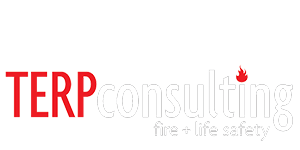Understanding the difference between rational analysis and smoke control
What is the difference between rational analysis and smoke control?
In a nutshell, rational analysis involves the overall assessment of fire hazards and their effects, while smoke control specifically addresses the management of smoke movement to enhance life safety during a fire incident.
What is rational analysis?
In the science of fire protection engineering, rational analysis involves a systematic and engineering-based assessment of fire hazards and the potential impact on a structure or facility. Rational analysis is often used to design fire protection systems, evaluate evacuation strategies, and assess the structural integrity of buildings under fire conditions.
During a rational analysis, the licensed engineers at TERPconsulting use scientific principles, calculations, and models to analyze factors such as fire growth, heat release rates, and smoke movement. This approach aims to understand the behavior of fire and its effects on the built environment.
What is smoke control?
Smoke control focuses specifically on managing and controlling the movement of smoke within a building during a fire event. During smoke control testing, the fire protection engineers at TERPconsulting employ various strategies, including ventilation systems, pressurization, and smoke exhaust, to limit the spread of smoke and enhance the safety of occupants.
The primary goals of smoke control are to improve visibility for evacuation, prevent smoke inhalation, and minimize property damage. This is crucial in maintaining tenable conditions for occupants and facilitating firefighting operations. The engineers at TERPconsulting work closely with an Authority Having Jurisdiction (AHJ) to perform the testing of a smoke control system.
How does rational analysis relate to smoke control systems?
TERPconsulting’s rational analysis services include the examination of the type of smoke control system to be used, methods of operation, and testing. Rational analysis is a systematic and analytical approach used to evaluate the performance of smoke control systems in buildings or structures. Smoke control systems are designed to manage and contain smoke in the event of a fire, ensuring the safety of occupants and facilitating the evacuation process.
When would rational analysis be used?
Performing a rational analysis is the precursor for a smoke control system to determine pass-fail criteria and fan sizing. TERPconsulting’s smoke control inspectors are professional fire protection engineers who use rational analysis to consider stack effect, temperature effect of fire, wind effect, HVAC systems’ effect, climate effect, and how the systems must be commissioned to maintain a tenable environment.


